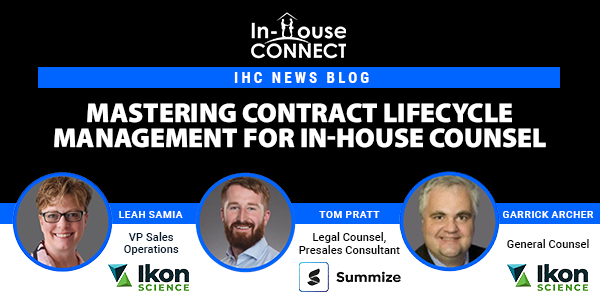In the fast-paced corporate world, effective communication with C-suite executives is not just a valuable skill—it’s a critical necessity. As in-house counsel, your role is intertwined with the organization’s decision-making process, and the way you convey information can make or break key outcomes. Drawing on insights from a recent webinar, this guide offers practical strategies to help you engage senior leadership with clarity and impact.
- Be Succinct and Direct
C-suite executives operate under tight schedules, making brevity essential. It’s vital to get to the point quickly. Rather than over-explaining, streamline your message to focus on the core information.
For example, instead of saying: “I think it might be beneficial to consider possibly reviewing the previous financial outcomes before making a decision.”
Say: “Review the previous financial outcomes before deciding.”
Utilizing bullet points and adequate spacing can make your key points stand out, allowing executives to absorb the most important information without unnecessary elaboration.
- Eliminate Superfluous Words
Efficiency in communication is about removing clutter. Filler words dilute your message and waste time. Always proofread for excess wording and simplify your sentences to enhance clarity.
For instance, rather than saying: “It seems like it could potentially be a worthwhile endeavor to possibly look into the benefits of this project.”
Opt for: “Review the benefits of this project.”
Reading your document aloud can help identify superfluous phrases and improve overall precision.
- Use Clear, Concise Language
Clarity is paramount when drafting emails, reports, or presentations. Use straightforward language and a structured approach, such as bullet points or short paragraphs, to improve readability.
For example:
- Objective: Complete the project by Q3.
- Current Status: 70% completed.
- Next Steps: Finalize the budget.
This format allows executives to quickly digest the information and make timely, informed decisions.
- Effective Presentations for C-Suite
When creating PowerPoint presentations for senior leadership, simplicity and visual appeal are key. Prioritize clear, minimalistic slides using charts, graphs, and bullet points to make complex data easier to grasp.
- Foster Empathy and Respect in Communication
Respectful communication is critical, especially when dealing with third parties like customers or vendors. Establishing a professional tone and engaging in meaningful small talk can set the foundation for successful collaborations. A thoughtful and understanding approach strengthens relationships and helps ensure smoother negotiations.
- Support Legal Advice with Practical Explanations
When advising against a course of action, offer practical alternatives rather than just saying “no.” Connect your legal recommendations to business outcomes. If a proposal doesn’t align with compliance standards, explain how it could impact the company’s objectives and suggest possible options that balance legal concerns with business goals.
- Celebrate Wins and Offer Support
Recognizing achievements and offering support during challenging times is crucial. Celebrate team successes and foster a culture of mutual encouragement in your communications with senior leadership. This approach builds rapport and reinforces your dedication to the organization’s overall success.
- Maintain a Positive Attitude
A positive, composed demeanor, even in stressful situations, leaves a lasting impression. Professionalism during difficult times fosters trust and respect from C-suite executives. Maintaining a steady attitude signals reliability, even when personal or work challenges arise.
Effective communication with C-suite executives requires a blend of brevity, clarity, and strategic insight. By adopting these techniques—ranging from concise writing to offering business-oriented legal solutions—you can ensure your messages are clear, actionable, and aligned with organizational goals. Whether you’re drafting an email, delivering a presentation, or engaging in a face-to-face meeting, the goal remains to communicate efficiently and foster collaborative decision-making at the highest level.
Missed The Session? You can watch it now via IHC On-Demand!







